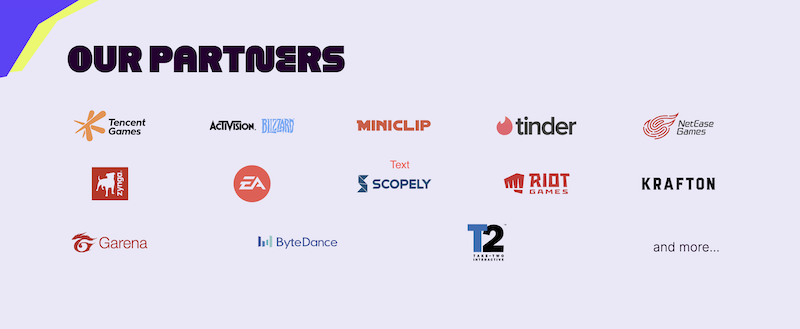
India is one of the fastest growing markets for digital payments in the world. Demonetisation and the government’s Digital India project have made it possible for users and companies to conduct transactions electronically off-grid. And with an aim to make digital payments for apps simpler, Coda Payments entered the Indian market.
The introduction of UPI Payments, pay later options has helped gaming publishers to scale up. Coda Payments released the scope for scalable business models that depend on an expanded digital payment model. Publishers often are unable to attract revenue margins as Google Play and Apple’s App Store take between 15 to 30 per cent of digital sales inside apps through their billing platforms. In that case publishers prefer Coda Payments for a better revenue model which has helped them to acquire more consumers. When publishers saw better results in terms of revenue, they reached out to them to sell their merchandise and other in-game inventory items. Coda Payments MD of APAC Yash Srivastava told AnimationXpress, “Publishers started to supply us with a lot of special goods to establish their brand as in some markets, we had a market share of between 80 to 90 per cent for the title, or at our worst, between 30 to 40 per cent. However, there was no advancement. The same publisher started saying, ‘Hey, we could also provide them special stuff; let’s see if we can start diverting traffic.’ There was eventually a significant transfer of traffic as the neighbourhood became aware of this. We had already established a name for ourselves in the gaming world. Despite the fact that there are other categories on the stores, only dating and gaming currently generate revenue. We’ll focus most of our attention on the games. Most of our customers in India are from tier two or tier three cities.”
According to him, $690 million was invested in Coda Payments last year. Among the sponsors were Smash Capital, Insight Partners, and Singapore’s GIC sovereign wealth fund. Apis Growth Firm II, a private equity fund run by Apis Partners LLP, and other present shareholders hold future ownership stakes in Coda.
India’s gaming industry is dominated by real money gaming. Aside from the top three, India hasn’t yet scaled in entertainment games. There was a time when PUBG and Free Fire made roughly $300 million, and BGMI began to make roughly $100 million before they were outlawed.
If a country bans a game and the company loses half of their earnings, that is entirely normal. Coda Payments as an organisation has a presence in 60-nations, so individual country revenues have no bearing on their global economy.

India has by far the best economics when it comes to payments, as well as the best penetration. According to him, user adoption is phenomenal and UPI has 400 million active users.
He added, “On the gaming publisher side, although India hasn’t been the biggest paying market, it has been the largest market for downloads for a while. So publishers that got eyeballs out of India started investing here, be it Garena, Krafton, Supercell or even Tencent. Most of the publishers preferred working with you only if you have a presence in India.”
He claims that India is the second-largest market for video gaming, with 500 million gamers. Moreover, with 24 million paying visitors last year, it had the greatest paying audience worldwide. The publishers’ efforts over the previous five years are beginning to bear fruit. These statistics are also pretty subdued. When it explodes, they will detonate, but for the time being, they are where they are.
He opined, “One of the best qualities I appreciate about Indian publishers is how hustle-oriented they are. They are all actively considering monetisation right now, so they are open to a wide range of possibilities. 100 million downloads are common among them. They possess the scale. The majority of them have incredibly original value propositions that function fantastically. Additionally, you will observe increased integration in strategy games, puzzle games, and other such games during the next five to seven years.”
Speaking about their business and competition, he said, “Our business has scaled to profitability using just $5 million in funding. We’ve gone up against two of the biggest, most prestigious tech companies. We were able to accomplish that because we maintain a laser-like focus on what we should and can achieve rather than attempting to do just about anything as that’s the surest way to lose money and set yourself up for failure. We have been pretty clear about what we wanted strategically. We discovered that APAC was a nice spot. Entertainment games have a very high frequency of usage, which results in a very low Customer Acquisition Cost for the platform, and we found this to be a sweet spot.”
Games played on mobile devices coupled with digital payments have changed the dynamics of the ecosystem. Now everybody has become a monetised gamer because of the availability of low cost packages which starts at hardly 20 rupees. “There is also a social element in gaming where friends/players try to copy or be on par with each other. They think that if their friend has a particular gun or if someone famous is wearing a popular skin, they would also try their hands on it, etc,” he added.
When asked about the hurdles, he claimed that as of now they don’t have any major challenge due to India’s stunning infrastructure and smooth payments. It is one of the simplest countries to deal with. Indonesia is their largest country, Philippines is second largest, whereas India has also been second and third. Malaysia is the following.
As for how they are creating more awareness about their platform, esports is one of the top segments for marketing, both at the influencer and user levels. To keep the community entertained, they organise tournaments, known as Coda Global Series (CGS). They also organise user-based tournaments, which they independently stream on their own social network.
Talking about esports, with the government mentioning esports as multisports events, there is a huge uptake in streaming platforms who want to stream esports and we will see a lot of institutionalisation of games just like IPL. He added, “Just like cricket, the same thing will happen to esports. There will be a mushrooming of esport tournaments and sport syndicates. The fact that there is regulatory clarity makes it possible for an alternative industry to get created. The regulatory clarity and the speed at which things have happened, is encouraging because if the government moves faster on policy, investments will flow, then users will be acquired. When users like good services, then they pay for it, leading to more jobs getting created and the chain goes on. How those opportunities play out is something which each company is thinking about,” he said.
He is upbeat about the future of Indian gaming and esports, and believes that a brighter future would result in better business.


